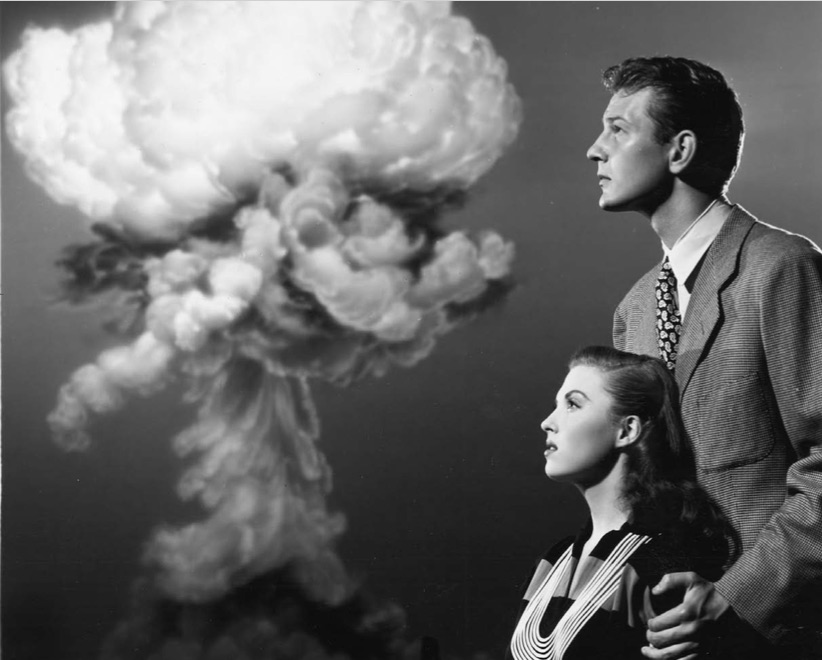How I learned to love the bomb

August 1945 marks a permanent rift between “the atomic age” and a time now gone forever. Cinema reacted to it in ways that were spectacular, indirect and evasive at different times and in various Countries. In the United States alone, according to Jerome Shapiro (“Atomic Bomb Cinema”), from 1945-99 the “bomb films” account for 4 percent of the annual output (with about 5 or 6 films annually in the 40s, more in the 50s, and remarkable peaks in the 60s and 80s). This alone questions the often repeated idea that people tended to ignore the existence of the bomb: even if much of the “sub-genre” is trash, popular imagination is clearly coping with its deepest fears in a revealing way.
Our selection is, of course, all too modest to reflect the true range of “atom bomb cinema”. It includes two American entries, a 1947 reflection on the naive and misdirected innocence during the period immediately following the shock of the bomb (The Beginning or the End, by Norman Taurog, 1947) and another one from the mental landscape of the Cold War, Gordon Douglas’ sci-fi achievement Them! (1954). La bataille de l’eau lourde (1948), a remarkable Norwegian film co- directed by Titus Vibe-Müller and Jean Dréville, presents an anti-heroic and polyphonic view of a historical situation. But the truly frightening films – that give the impression of emerging from the midst of the experience – are Japanese. Kaneto Shindo, director of powerful Children of Hiroshima, was raised in that city. The last entry is the least known: Hiroshima-Nagasaki, August 1945, the famous short documentary by Akira Iwasaki was doomed to remain in the dark as it was immediately forbidden because of its direct horror and accusatory power. Another film that deals with this subject in an original way is Good Times, Wonderful Times by Lionel Rogosin.
Peter von Bagh


